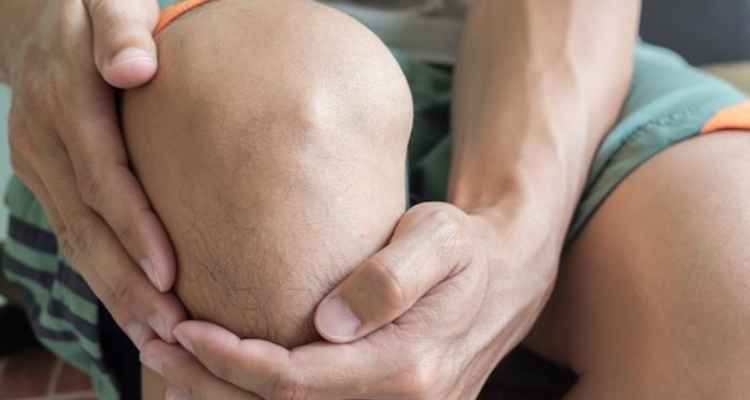It’s a common scenario: You’ve been on your feet all day and when you finally get into bed to rest, you can’t fall asleep. The culprit? Knee pain. If you experience knee pain at night, you know how frustrating and disruptive it can be. A throbbing or aching knee can prevent you from getting the restful, restorative sleep you need and deserve. While there are several causes of knee pain including injury, tendonitis, and bursitis, the primary cause is usually a form of arthritis.
There are many topical creams that can help with knee pain and arthritis, one popular and effective arthritis cream is Aromalief’s lavender cream for arthritis. It’s suitable for vegan pain relief as it is a natural arthritis cream product. If you suffer from any other kind of nerve or joint pain other than arthritis then this cream is very effective, as it is not only a neuropathy pain relief cream but a sciatica pain relief cream as well.
Why does knee pain get worse at night?
While overexerting yourself during the day can definitely play a role in worsening nighttime pain. Jobs that require you to remain standing for most of the day put a lot of pressure on your knees.
Not having distractions can also make knee pain at night worse. There is simply nothing else to keep the focus off your knee pain when you’re in bed at night. During the day you are busy with work or family, but at night all your external interactions are gone.
Additionally, when you’re moving, your joints stay lubricated, which decreases pain. When you stop moving, such as when in bed, your joints don’t have as much lubrication. This also contributes to stiff joints when you wake up in the morning and it may take you some time to get your knees moving again.
Tips for reducing nighttime knee pain
Regardless of the specific cause, you’re probably wondering how you can ease your nighttime discomfort. Here are some things you can do to reduce your knee pain and make your night more comfortable and relaxing.
1.Use cushion support
Finding a comfortable position when you’re in pain can be a challenge. This tip involves using a pillow to support and protect your painful knee. If you’re a side sleeper, place a small pillow between your legs. If you’re a back sleeper, place a pillow under your knees. These positions will provide support and keep your knees from knocking together during the night.
There’s no need to buy a specific type of pillow to practice this tip—using a pillow you already have will work fine.
2.Use a pain-relieving cream
Pain-relieving creams can provide short-term, but effective relief—perfect for helping reduce pain during the night. Ideally, the pain relief cream you use should have anti-inflammatory and analgesic benefits, as well asprovide nutrients to help keep the joints fluid. Most pain relief creams only contain one or two of these benefits, but Aromalief Hemp Pain Relief Cream provides all three.
Made with science-backed ingredients such as cold-pressed hemp seed oil, menthol, vegetable glucosamine, algae-extracted chondroitin, L-arginine, and pure distilled MSM, this aromatic cream provides immediate pain relief and supports the health of your joints.
Apply the pain relief cream 20 to 30 minutes before bed by rubbing the cream in a circular motion on your affected knee.
3.Take a bath before bed
Sometimes a nice, soothing bath is just what the doctor ordered. In fact, taking a warm bath is one of the best ways to treat knee pain and stiffness. The heat from the water can increase circulation, decrease inflammation, and temporarily reduce the force of gravity that’s compressing the knee joint. Plus, it works fast. A 2010 study published in Rheumatology International found that adults with osteoarthritis of the knee were able to take longer, faster strides after soaking in warm water for 20 minutes a day for two weeks. In another study, participants with arthritis in the knee were able to reduce their pain medication after adopting a habit of regular soaks.
Fill the bathtub with warm water (not hot) and soak for at least 20 minutes. You can also add some Epsom salts and essential oils to make your bath even more luxurious and relaxing. If you can’t take a bath some nights, opt for using a heating pad instead. While getting in the water is ideal, a heating pad can provide similar effects.
4.Treat the underlying problem
While having tools to manage nighttime knee pain is important, making lifestyle changes that improve the root cause of your knee pain can ultimately result in less pain during the night. First of all, make sure to get a proper diagnosis so you can determine your treatment options and optimize your treatment plan. In general, things you can do to reduce your knee pain over time include:
- Exercising regularly in ways that are appropriate for you (walking, yoga, biking, swimming, etc.)
- Eating a well-balanced, anti-inflammatory diet that’s high in whole, plant-based foods and low in processed foods and animal products.
- Staying hydrated.
The bottom line
Experiencing nighttime knee pain can be incredibly distressing and get in the way of getting a good night’s sleep. Applying the tips discussed in this article, along with making healthy lifestyle changes, can make a night-and-day difference in relieving your nighttime knee pain.

